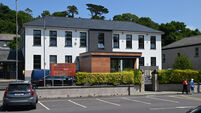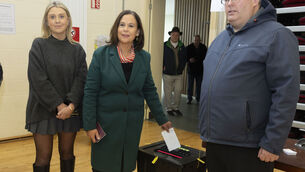From milking the scenery to milking the marginal land

With milk production no longer under quota, environmentalists fear that the transformation of rough land into pasture will proceed on a larger and faster scale. Traditional wildlife habitats will be eradicated and more iconic species threatened. Places like West Cork are not what they used to be; attractions that drew tourists are disappearing.
In 1999, in a pocket walk book I wrote, I noted that “Beyond Skibbereen, on the R592 going west, the land changes dramatically. The green sward of agribiz stops suddenly at the Roaringwater River, a few miles short of Ballydehob. Beyond it, and from here on, bedrock breaks the fields and there is more gorse than grazing. Now, instead of fence-to-fence nitrate grass bedspreads, the fields are small patchworks, rock-rent and bockety, joined by seams of hedge.
“Here, the land is ‘free’, even if owned; undomesticated, even if farmed. It’s a skipping land, up and down and lively as a fiddle air, jigging and reeling as it goes. Much is not worth ‘developing’, for you can’t grow grass on rocks or spuds in bogs. It offers little sustenance, and that little is hard won.
“Of food for the spirit, there is a feast, and if we could live on scenery we’d be satiated. Like the sea or sky, the land here is nature’s domain and humans have only scratched the edges. Beyond the roadside fields, the bog stretches away like a brown mantle to the hills or sea. In winter, it is drab as sackcloth, in summer, it is softened with heather and bright with gorse.”
Since then, the gorse, heather and rock outcrops splashed with white and orange lichens, the vivid, vibrant tapestry of the earth’s surface is, hectare by hectare, being greened over. It is as if a giant brush is painting the marginal land in a monotone green. First come the rock breakers, like processions of invading super-insects when seen from afar. They crack the rocks. JCBs follow, scraping the topsoil and the peat below it, and gathering it in piles. Drains are installed in the heavy, grey clay underneath. Surplus clay is mixed into the piles, and the whole is then redistributed over the cleared ground. Grass seed is spread, and a pasture that was never there before appears. Man engineers the earth’s surface (and, of course, has domain over all things that live upon it).
We grow more beef and now, with the removal of milk quotas, will grow more milk. Good luck to the farmers. Absence of quotas may or may not make them richer; that is another debate. Milk is far more efficient in return for calorific input: it takes five times more feed to produce protein in meat than in milk.
Meanwhile, the last refuges for wildlife are threatened. Concern is voiced that no margins will be left around fields, and all remaining hedges bulldozed away to create prairies, the cattle moved from strip to strip separated by electric fences.
Hedgerows disappear apace, on main roads, byroads and even bohreens. County councils notify farmers that if a road accident can, by any stretch of the imagination, be blamed on limited visibility, they can be sued for not keeping the roadsides trimmed. So, rather than employ a contractor to trim annually, the farmer, not unreasonably, gets him to cut the hedge down to the ditch top, so that it will not be a problem for years, if ever, again.
Gorse fires were blazing at Kealkill, Glengarriff, Bantry and elsewhere in far west Cork throughout the last month although the Wildlife Act prohibits burning between March 1 and August 31. Burn, burn and burn, not for regeneration but for grass. In last week’s Irish Examiner, Donal Hickey and a letter from Padraic Foley of the Irish Wildlife Trust eloquently raised this topic.
Meantime, if you find choughs nesting in your farmyard, and otters setting up home in a lake you’ve created, along with coots, waterhens, egrets and herons, should you not get the GLAS payments awarded to farmers who have these iconic creatures on their land? Apparently not. John Kingston, owner of the Springmount Stud outside Clonakilty, showed me the choughs and the lake, but tells me that, because his land is not designated for GLAS payments, it does not qualify.
Wild creatures are, these days, forced to move house. Should not those that demonstrably provide refuge be awarded, by payments, for welcoming them?
DISCOVER MORE CONTENT LIKE THIS













